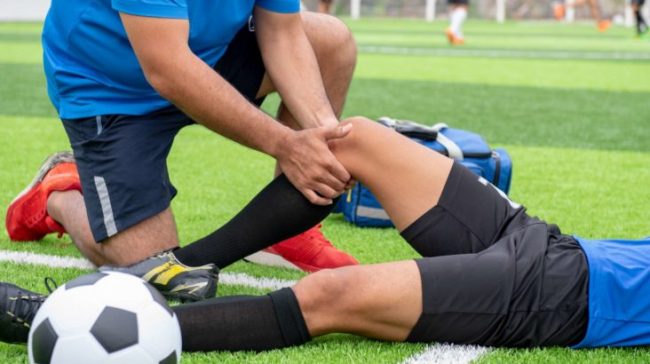
Some of the Premier League’s best ever players have suffered and recovered from serious ACL injuries. These include the EPL’s record scorer Alan Shearer, who actually snapped his right ACL during his debut season at Blackburn Rovers in 1993.
Legendary Manchester United skipper Roy Keane also suffered a similar injury in an EPL game against Leeds at the beginning of the 1997/98 season, before returning the following year to lead his charges to an historic treble.
The good news is that people can recover from ACL injuries regardless of the circumstances. Here’s a breakdown of the injury’s symptoms, the risks of surgery and how to recover over time.
What is an ACL Injury?
An ACL injury is best described as a tear or sprain of the anterior cruciate ligament in the knee. The ACL is one of the strong bands of tissue that connects your femur to your tibia, and there are various degrees of injury depending on the exact damage incurred.
ACL injuries most commonly occur during fast and high-octane sports, particularly that involve consistent sprinting, sudden stops and constant changes in direction.
Sports that involve persistent jumping and landing also place an incredible strain on the ACL, which is why soccer, American football, basketball and even downhill skiing provide a particular and pertinent risk.
When your ACL is damaged, the first sign may well be an audible pop or popping sensation in the knee joint, while swelling and a sense of instability when the leg bears weight may also be indicative of an ACL injury.
Severe pain may also accompany more serious injuries, while the loss of motion is a telltale sign too.
What are the Risks of ACL Surgery?
Depending on the severity of your ACL injury, the treatment options will vary. Less serious instances (such as strains) can often be resolved through rest and rehabilitation, with a view to letting the strain heal and gradually restoring your stability and strength.
In the event of a tear, however, you may well require surgery to replace the torn ligament, with this process also followed by an extended period of rehabilitation.
If you do have surgery, the most common complication afterwards is pain around the kneecap. This is a particular risk in instances where you have surgery performed with a patellar tendon graft, as this procedure requires patients to have bone removed from the kneecap.
These patients may also be prone to a patellar fracture and patellar tendon tear, although such instances are fairly uncommon.
Other rare complications may also occur in the event of a surgical error, which may result in the need to consult with a medical negligence solicitor.
The Last Word – How to Cope With Post-Surgery Pain
When dealing with post-surgery pain, one of the key things is to optimise your overall level of mobility.
Remember, when one area of your body lacks mobility, this can cause issues elsewhere in the body, so it’s crucial that you continually flex your ankle, knee and hip joints as much as possible in the wake of ACL surgery.
Similarly, diligently following your course of physiotherapy and rehabilitation can minimise discomfort and expedite your recovery, so it’s important to remain positive and motivated at all times.
